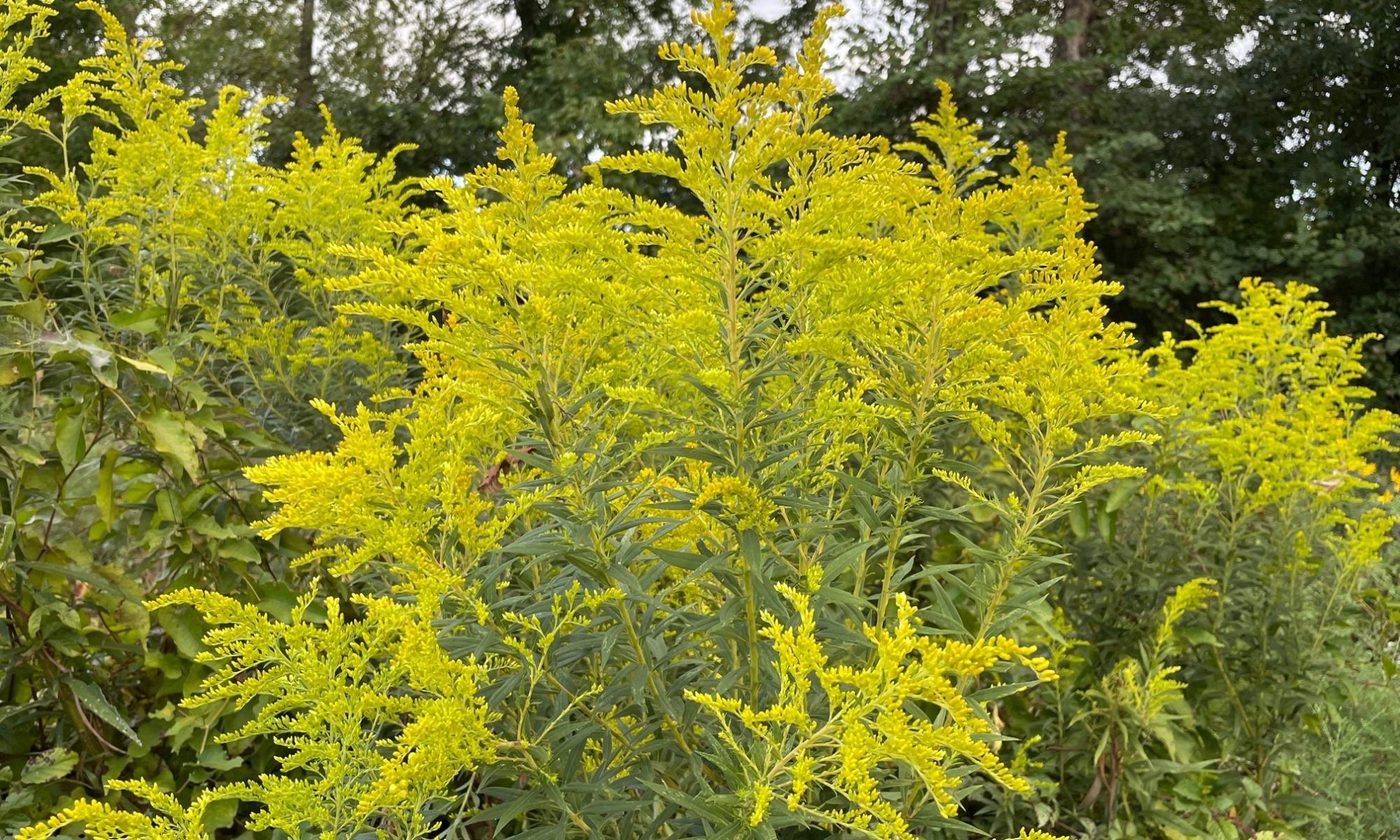
UT Gardens’ September Plant of the Month
Submitted by Celeste Scott, Horticulture Extension Agent, UT-TSU Extension Madison County
As the heat of summer lingers and we move slowly into the fall season, gardens can often look dull, tired and tattered. The blooms of many beloved summer favorites (lilies, daylilies, and coneflowers, just to name a few) have faded, leaving gardeners longing for a flash of late season color to rejuvenate spirits. The vibrant perennial, goldenrod (Solidago), can fill the gap between summer and frost with its golden blossoms and might be just the answer for weary fall gardens. There are nearly 100 species of Solidago, and many of them are native to North America.
While goldenrod has long been considered a weedy plant best relegated to roadsides and wild spaces, there are native species and improved hybrids that can fit well into the home garden. A plant evaluation study conducted by Chicago Botanic Garden compared the landscape performance of 25 species and garden hybrids. Evaluated traits included disease resistance (powdery mildew and rust), bloom coverage, flowering period, hardiness and habit. Among the best performers were Solidago ‘Baby Sun’, Solidago ‘Goldkind’, Solidago flexicaulis ‘Variegata’, Solidago sphacelate ‘Golden Fleece’ and Solidago rigida. The overall standout was Solidago rugosa ‘Fireworks’. Its consistent disease resistance coupled with its clumping nature, small stature and reliable blooms that resemble sprays of fireworks has earned this cultivar a well-deserved place in ornamental landscapes. There have since been numerous cultivars introduced (‘Cloth of Gold’, ‘Golden Baby’ and ‘Crown of Rays’) that continue to build on characteristics that are desirable for home landscapes such as clumping growth habit, compact height, clean foliage and bountiful floral display.
While Solidago species can be found growing naturally in diverse habitats, each species has specific environmental preferences. Those most used in landscape settings prefer full sun, average soil and have a clumping or slowly spreading rhizomatous root system. Goldenrod is a herbaceous perennial adaptable to poor soil, tolerant of drought once established and has potential to reseed. Goldenrods blooms between late summer and fall providing a much-needed source of late season nectar for many beneficial insects. Just as nature provides a compilation of flowering plants throughout the growing season, home gardens can mimic nature’s sequential bloom patterns to ensure nectar and pollen provisions during this time of year when blooms can be sparse. Perennial companions to plant alongside goldenrod for late summer and fall interest include aromatic aster, New England aster, ironweed, Joe-Pye weed, beautyberry, rudbeckia and salvia.
Goldenrod is often mistakenly blamed as the trigger of seasonal allergies, but the true offender is ragweed, a plant with less showy flowers that is inconspicuously blooming at the same time as goldenrod. The pollen produced by goldenrod flowers is too heavy to be carried in the wind and not the cause of dreaded hay fever. Don’t let false accusations and weedy reputations deter you. I encourage you to “Grow on the Wild Side” and include goldenrod in your garden this fall.
Solidago goldenrod can be viewed in the landscape at all three University of Tennessee Gardens locations. Jackson is growing an unknown species of Solidago in the parking lot area, and S. rugosa ‘Fireworks’ in the rain garden. S. rugosa, roughleaf goldenrod, can be viewed at Crossville in the rain garden. Knoxville has two cultivars on display. S. rugosa ‘Fireworks’ is located at the entrance to the Children’s Garden, and Solidago x ‘Little Lemon’ can be found in the Post-Wild Pollinator Garden.
The UT Gardens includes plant collections located in Knoxville, Crossville and Jackson, Tennessee. Designated as the official botanical garden for the State of Tennessee, the UT Gardens are part of the UT Institute of Agriculture. The Gardens’ mission is to foster appreciation, education and stewardship of plants through garden displays, educational programs and research trials. The Gardens are open during all seasons and free to the public.